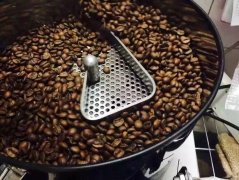Ethiopian coffee introduces the best Arabica coffee in the world.

Ethiopia is one of the major producers of Arabica coffee in Africa, producing the best Arabian coffee in the world. It is said that coffee was first discovered by shepherds in Essekafa, and the name of coffee evolved from Kafa, so Essex is still the hometown of coffee.
Production and processing of coffee
Ethiopia's geographical environment is very suitable for coffee growth. Coffee is mainly grown in the southern highlands between 1100 and 2300 meters above sea level. The main coffee producing areas are Harar, Limu, Djimma, Sidamo, Kaffa, Yergacheffe and Wellega. The soil in these areas is well drained, slightly acidic and red loose.
Ethiopian coffee is harvested once a year. The beautiful white coffee flowers bloom from March to April, and then the fruit begins to grow. From September to December, the red coffee fruit is ripe for picking. The new season of coffee begins to be exported from November to December.
At present, about 25% of the Ethiopian population directly or indirectly depends on coffee production for a living. The majority of farmers use traditional planting methods. Artificial care of coffee trees, the use of organic fertilizers, do not use harmful pesticides and herbicides, etc. Therefore, most of the coffee produced by Ethiopia is organic coffee.
Due to different planting methods, coffee can be divided into three types: forest-semi-forest coffee (Forest or semi-forest coffee), courtyard coffee (Garden coffee) and plantation coffee (Plantation coffee).
60% of the coffee belongs to forest-semi-forest coffee. In such a wild coffee forest, pesticides are not used at all, but biological methods are used to control pests.
35% of the coffee is courtyard coffee. In this kind of coffee garden, the planting is three-dimensional. Coffee is located in the lower layer and gets a suitable growth environment in the shade of other crops. Fertilizers are mainly fallen leaves, withered grass and animal manure.
5% of the coffee belongs to plantation coffee. This is a modern way of growing. Coffee is also grown in a forest, but new varieties are used and planted in rows with other shade trees.
Due to different processing methods, coffee can be divided into washed coffee (Washed coffee) and sun-cured coffee (Sun-dried coffee).
Washed coffee accounts for 35% of exports. Good quality washed coffee is processed with freshly picked fully ripe fruit, picked carefully and closely monitored by professionals. The picked clean coffee beans are pulped on the day of picking, then fermented, washed, dried and peeled. The humidity of processed coffee beans is kept at about 12%.
Sun-cured coffee accounts for 65% of exports. Mainly picked by families, red coffee beans are placed on cement floors or on high tables to dry to about 11.5% humidity, then peeled and cleaned.
Grading and quality control system of coffee
In Ethiopia, the grading and quality control system of coffee is divided into three levels: producer, regional and national. All coffee is inspected by local inspection agencies before leaving the country of origin, and then re-tested at the coffee inspection and grading centers in Addis and Diredawa to determine its quality grade. Coffee is graded before auction and sale and is important for all groups involved in production, acquisition, export and consumption. Before export, coffee must also be sent to a national quality control agency for inspection to confirm that the origin and color meet the export standards to ensure the reputation of Ethiopian coffee.
At present, Ethiopia's coffee grading and quality control system mainly has two indicators: visual inspection and cup evaluation, including the color, cleanliness, origin, taste and characteristics of coffee beans. The export rating is marked by simple numbers, with the best washed coffee at level 5 and the best sun-cured coffee at level 4. After grading, mark the place of origin and then export. Exports are usually paid by letter of credit, which can not only reduce the risk of foreign exchange collection for exporters, but also give quality assurance to importers.
According to the law, all coffee is sold through an auction held by Addis and DiRedawa. During the coffee harvest, such auctions are even held twice a day.
The export of coffee
Coffee is Ethiopia's most important export cash crop and the main source of Ethiopia's foreign exchange earnings. Ethiopia's coffee exports account for about 3% of the world market, making it the eighth largest coffee exporter in the world. Coffee exports increased steadily from 58000 tons in 1990-91 to 110000 tons in 1995-96 and remained at this level in the following years. The export volume exceeded 110000 tons from 2001 to 2002 and reached 127000 tons from 2002 to 2003. As the price of coffee on the international market has been declining for a decade, Ethiopia's foreign exchange earnings have been seriously affected. Before the sharp drop in coffee prices, coffee exports accounted for more than half of Ethiopia's foreign exchange earnings, but now they account for only about 35 per cent. But according to the International Coffee Organization, coffee prices rebounded in 2002, rising from 41 cents per pound in September 2001 to 52 cents per pound in 2002 and 59.7 cents per pound in 2003. The average price in March 2004 was 60.8 cents per pound, an increase of 50% over September 2001. This is excellent news for Ethiopia.
Ethiopian people are addicted to coffee. In 2003, domestic consumption accounted for 42.3% of the total output, with a per capita consumption of 3 kg. But more than half of the coffee produced each year is used for export to earn foreign exchange. The main exporters include the United States, Italy, the United Kingdom, Sweden, Norway, Greece, France, Belgium, Germany and Australia.
Before 1974, the right to produce, process and trade coffee was in private hands. During the military administration, private farms were nationalized and smallholder coffee producers were snubbed. In 1991, the Ethiopian Transitional Government issued a new economic policy to encourage private businessmen to export coffee. As a result, the number of private coffee exporters has increased sharply. Nearly 90% of coffee exports are now in the hands of private exporters.
The characteristics of Ethiopian coffee
The natural characteristics of coffee beans include size, shape, acidity, texture, taste and aroma. Essel's coffee beans are small, fragrant and sour like wine, and are loved by coffee lovers. Because of its unique aroma and taste, Ethiopian coffee is often used in the production and variety improvement of beverages, ice cream and candies.
The world-famous Ethiopian coffee is mainly:
1. Limu coffee grows between 1400 meters and 2000 meters above sea level. Wash the coffee. Excellent quality, with strong nut aromas, suitable acidity, with the intensity of wine. The annual output is 29000 tons.
2. Jima Coffee grows between 1400 and 1800 meters above sea level. Sun-baked coffee. Slightly sour, with nutty aromas and a long finish. The annual output is 70000 tons.
3. Gambi coffee grows between 1500 meters and 2300 meters above sea level. It is gourmet coffee with moderate acidity and fruity aroma. The annual output is 34000 tons.
4. Yerqin coffee grows from 1500 meters to 2200 meters above sea level. Mocha flavor, with floral and spicy aromas. The average annual output is about 28000 tons.
5. Sidamo Coffee grows at an altitude of 1400-2200 meters. Suitable acidity and high quality. The average annual output is about 37000 tons.
6. Harald Coffee grows on highlands above 2700 meters above sea level. It is the best coffee in the world, medium acidity, intoxicating exotic flavor, with slightly tipsy, dried fruit aroma, is pure mocha coffee. The average annual output is about 26000 tons.
Information related to the coffee trade
Official institutions:
Ministry of Trade and Industry (Ministry of Trade & Industry)
P.O.BOX 704
FAX: 00251-1-515411
TEL: 00251-1-518025
E-mail: moti@telecom.net.et
Coffee and Tea Bureau (Coffee & Tea Authority)
P.O.BOX 3222
FAX: 00251-1-517293
TEL:00251-1-518088
E-mail: etcoftea@telecom.net.et
Coffee research institute
Jima Agricultural Research Center (Jimma Agricultural Research Center)
P.O.BOX 192 JIMMA
TEL: 00251-7-110367
FAX: 00251-7-111999
E-mail: jare@telecom.net.et
Coffee association
Ethiopian Coffee exporters Association
(Ethiopian Coffee Exporters Association)
P.O.BOX 8808, ADDIS ABABA
FAX: 00251-1-711477
TEL: 00251-1-355378
E-mail: ecea@telecom.net.et
Oromo Coffee Growers Cooperative
(Oromiya Coffee Farmers Cooperative Union)
P.O.BOX 1394 CODE 1100
FAX: 00251-1-506116
TEL: 00251-1-506114
E-mail: cofunion@telecom.net.et
Sidamo Coffee Growers Cooperative
(Sidama Coffee Farmers Cooperative Union)
P.O.BOX 122067
FAX: 00251-1-527552
TEL: 00251-1-525363
E-mail: sidacoop@telecom.net.et
Yeerqifa Coffee Growers' Cooperative
(Yirgachefe Coffee Farmers Cooperative Union)
P.O.BOX 122641
FAX: 00251-1-402533
TEL: 00251-1-431774
E-mail: yirgachefe@telecom.net.et
Coffee enterprise
Coffee planting and development co.
(Coffee Plantation Development Enterprise)
P.O.BOX 4363
FAX: 00251-1-711097
TEL: 00251-1-710134
Ethiopian coffee and tea growing and marketing co.
(Ethio Coffee & Tea Plantation & Marketing Plc.)
P.O.BOX 1006
FAX: 00251-1-627764
TEL: 00251-1-615608
E-mail: ethio.coffee@telecom.net.et
Coffee processing and warehousing company
(Coffee Processing & Warehouse Enterprise)
P.O.BOX 12653
FAX: 00251-1-403722
TEL: 00251-1-431860
Coffee Technology Development and Engineering Company
(Coffee Technology Development & Engineering Enterprise)
P.O.BOX 5898
FAX: 00251-1-533668
TEL: 00251-1-155920
(source: business Office of the Embassy in Ethiopia)
Important Notice :
前街咖啡 FrontStreet Coffee has moved to new addredd:
FrontStreet Coffee Address: 315,Donghua East Road,GuangZhou
Tel:020 38364473
- Prev

Household iron pot roasting coffee skills how to bake coffee beans at home?
We can indeed bake coffee in our iron pans, which is actually what people in many European countries are doing. What you need is a light frying pan with a sealed lid, and of course you can pick a heavy one if you want to do an aerobic workout; and gas / electric stove, oven thermometer, tablespoon, metal sieve pan for cooling and insulating gloves. In order to make
- Next

History of the International barista Competition WBC (World Barista Championship)
English article: in 2000, a group of people who devoted themselves to coffee showed the first comparison of WBC (World Coffee Cup) in Montana. Their opinions have created a competition platform for the most popular coffee shops from all over the world. Twelve contestants from different countries took part in the final, and Norway's ROBERT THORESEN won the championship. To do something about
Related
- Beginners will see the "Coffee pull flower" guide!
- What is the difference between ice blog purified milk and ordinary milk coffee?
- Why is the Philippines the largest producer of crops in Liberia?
- For coffee extraction, should the fine powder be retained?
- How does extracted espresso fill pressed powder? How much strength does it take to press the powder?
- How to make jasmine cold extract coffee? Is the jasmine + latte good?
- Will this little toy really make the coffee taste better? How does Lily Drip affect coffee extraction?
- Will the action of slapping the filter cup also affect coffee extraction?
- What's the difference between powder-to-water ratio and powder-to-liquid ratio?
- What is the Ethiopian local species? What does it have to do with Heirloom native species?

